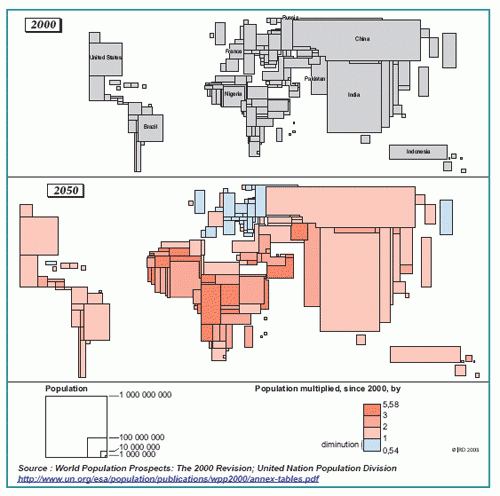Population growth 2000-2050

Reading the graph
On these two world maps, the countries are represented by rectangles whose surface area is proportional to their estimated population in 2000 (top) and their projected population in 2050 (bottom). Both these population cartograms are constructed on the same scale, so the population change between the two dates can be compared. For the entire world, it rises from 6 billion in 2000 to 9.3 billion in 2050. On the 2050 map, the countries whose population declines between 2000 and 2050 are shown in blue. Countries where the population rises are shown in red: lightred when it increases without doubling, bright red when it is multiplied by two to three, dark red when it more than triples.
Africa will grow fastest up to 2050
According to these projections, the countries of Europe (except France, Ireland and the Netherlands), Japan and Cuba will experience a population decline, while in around fifteen African countries, in Yemen and Afghanistan, the population will triple. In most other African countries, along with Pakistan and a few countries of the Middle East and Central America, it will double. The populations of the other countries of America, Asia and North Africa will grow but not double. For example, the populations of China and India will increase by 20% and 50% respectively.
Sources
Ces cartes ont été publiées par l’ Institut de recherche pour le développement (IRD) dans l’ouvrage Population et développement durable. Des cartes pour voir.
Data come from the World Population Prospects : the 2002 Revision
